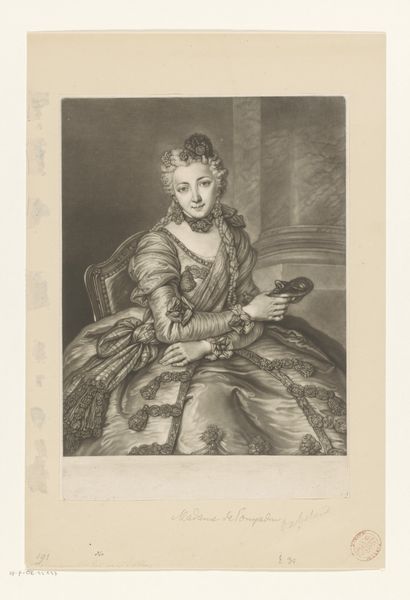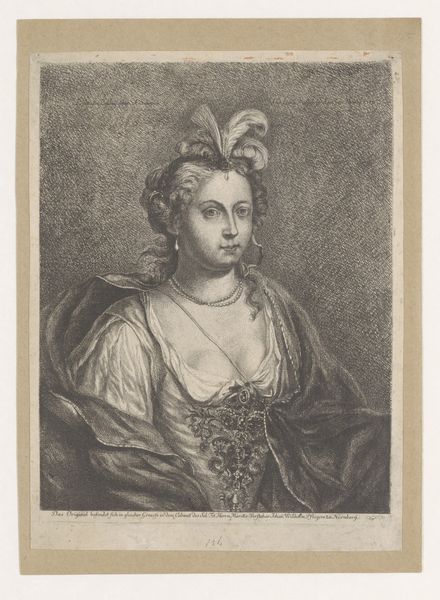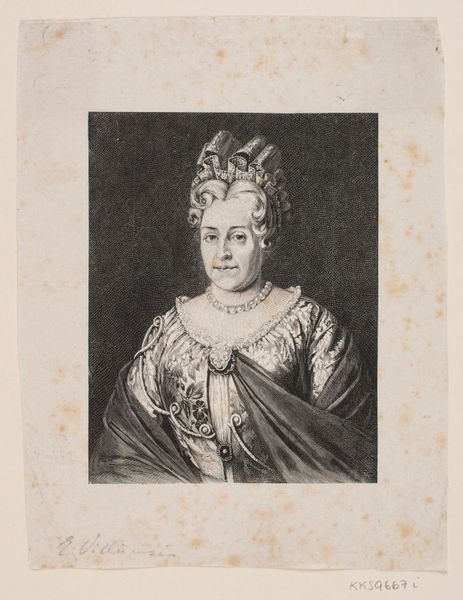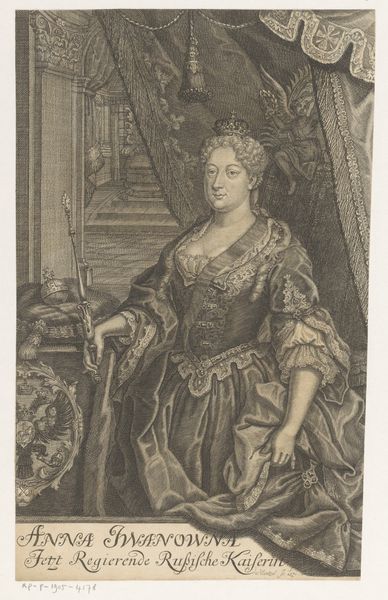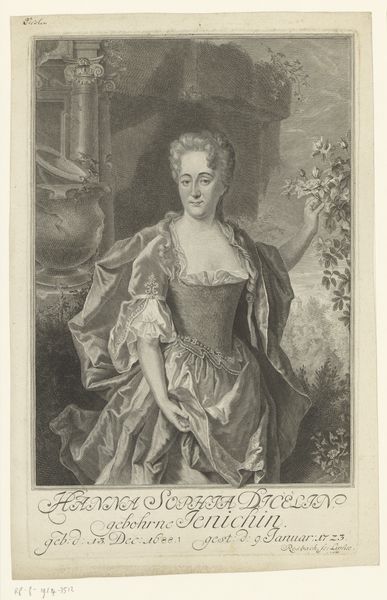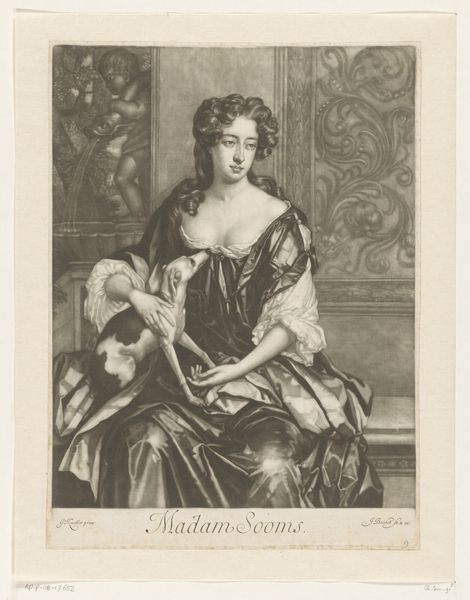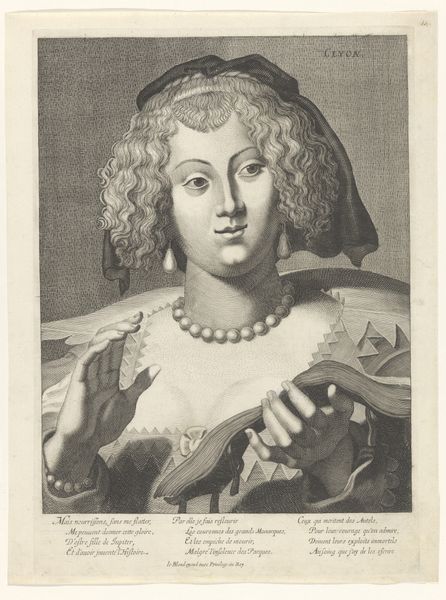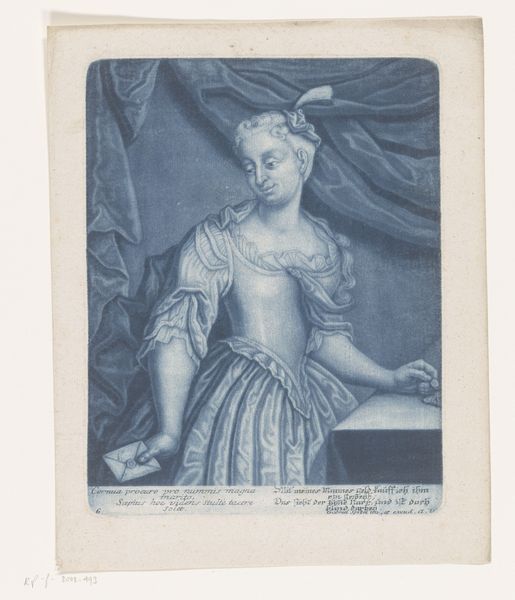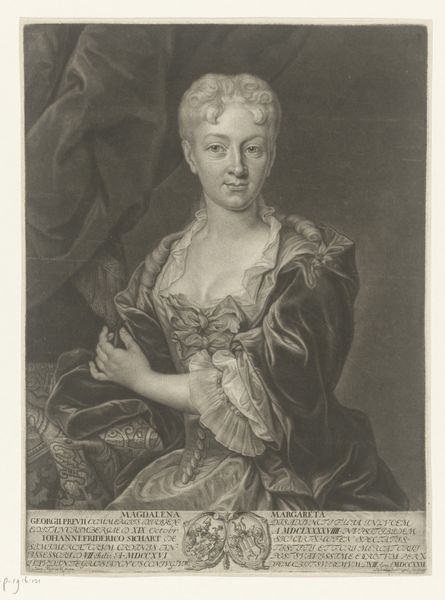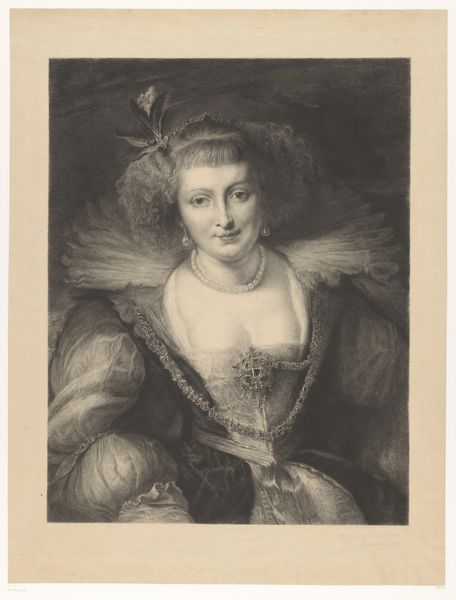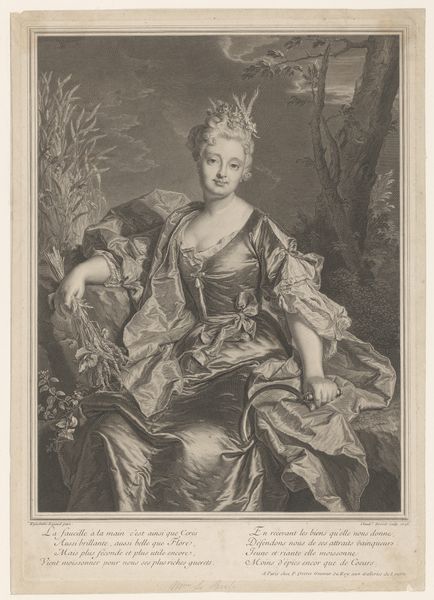
Dimensions: height 337 mm, width 244 mm
Copyright: Rijks Museum: Open Domain
Jean Théodore Joseph Linnig created this print of an unknown woman in Belgium in the 19th century. During this period, portraiture wasn't just about capturing a likeness; it was deeply intertwined with social status and identity. This image constructs meaning through its visual codes. The woman's ornate headwear, jewelry, and elaborate dress signify wealth and belonging to a higher social class. The downward glance creates an aura of modesty and grace, qualities valued in women of that era. Belgium in the 1800s was experiencing rapid industrialization and shifting social structures. The emerging bourgeoisie sought ways to assert their status, and portraiture became a powerful tool for displaying social identity. To understand this artwork better, we might turn to resources on the history of fashion, social customs, and art patronage in 19th-century Belgium. The meaning of art is contingent on its social and institutional context.
Comments
No comments
Be the first to comment and join the conversation on the ultimate creative platform.
